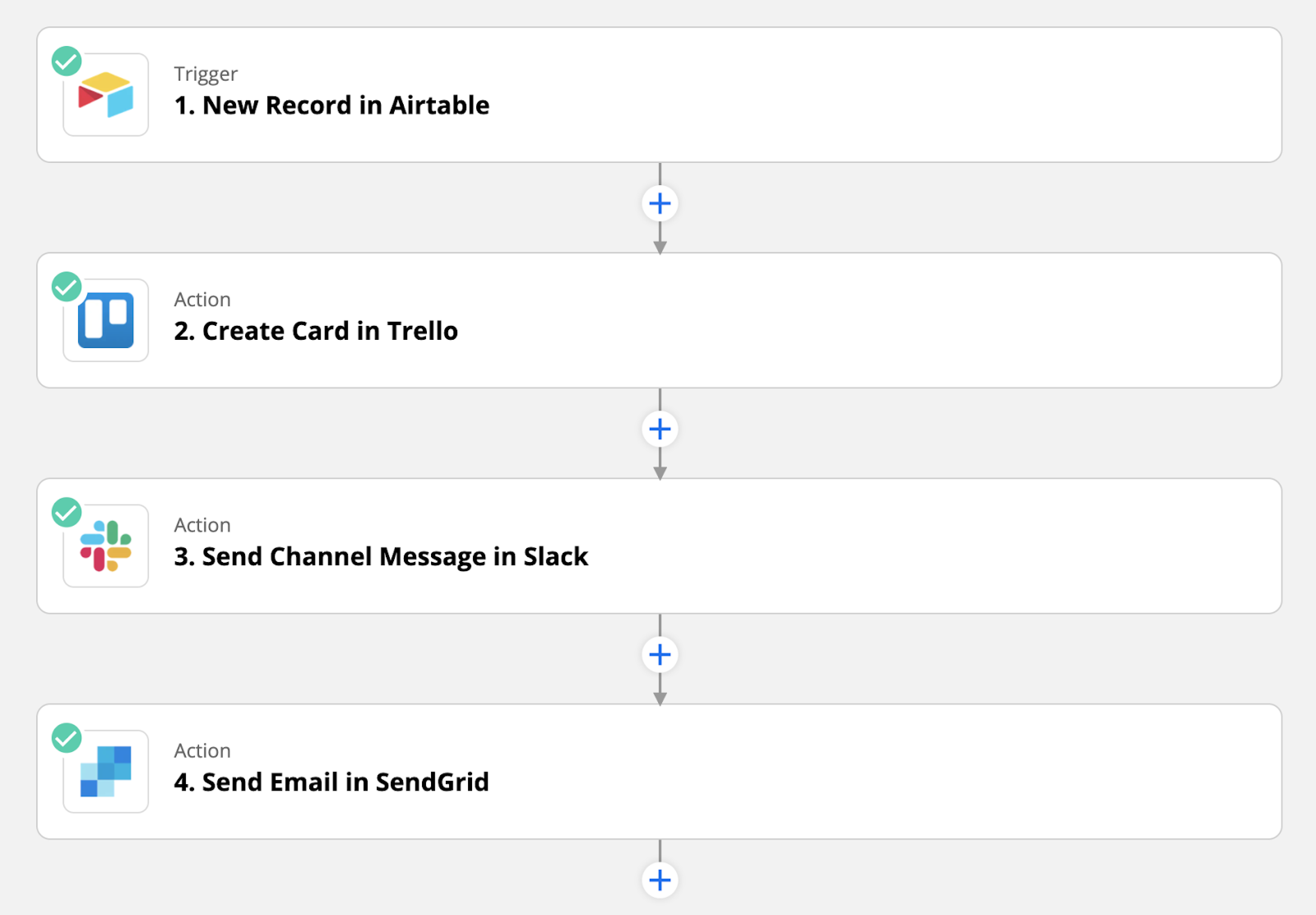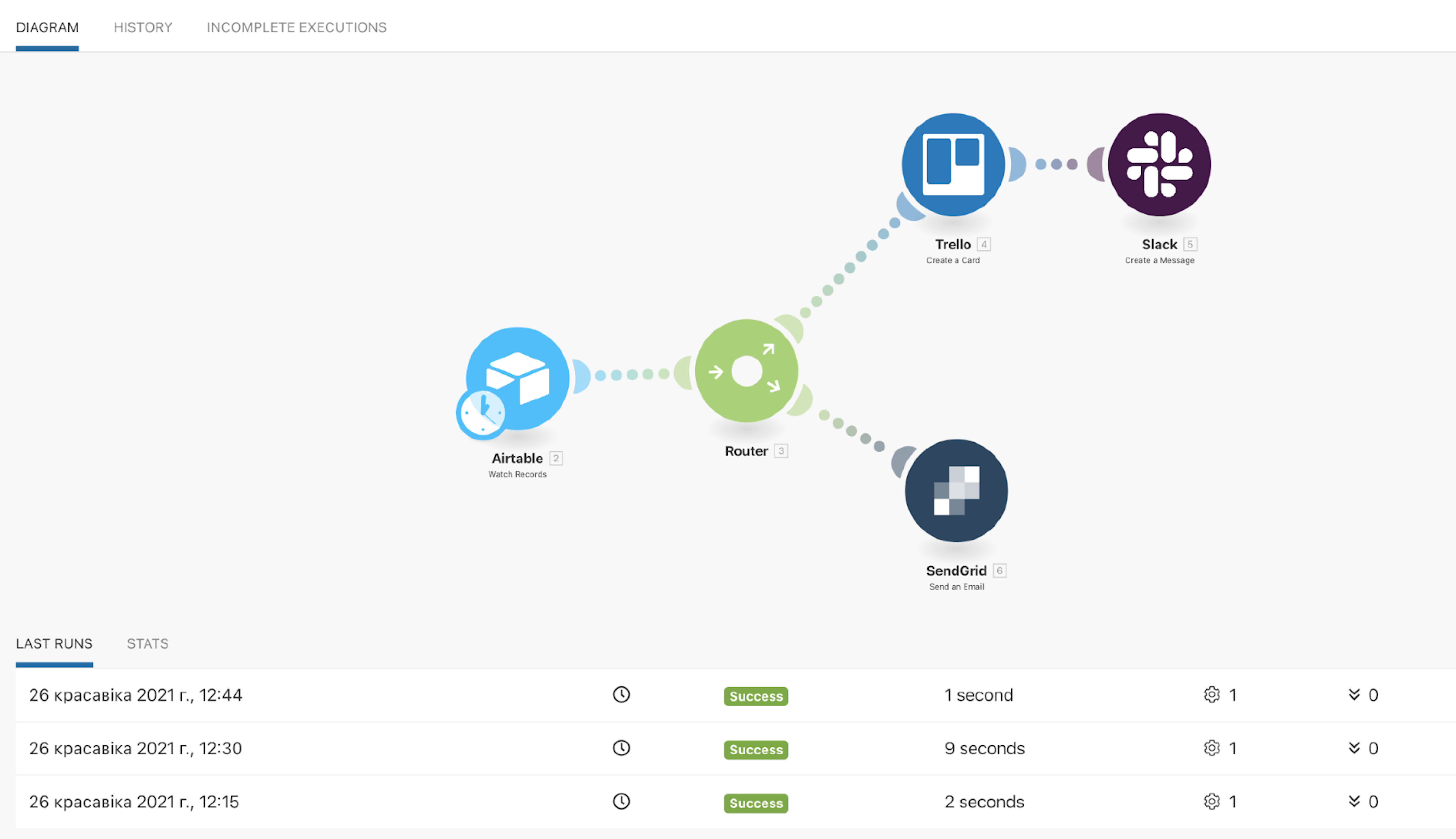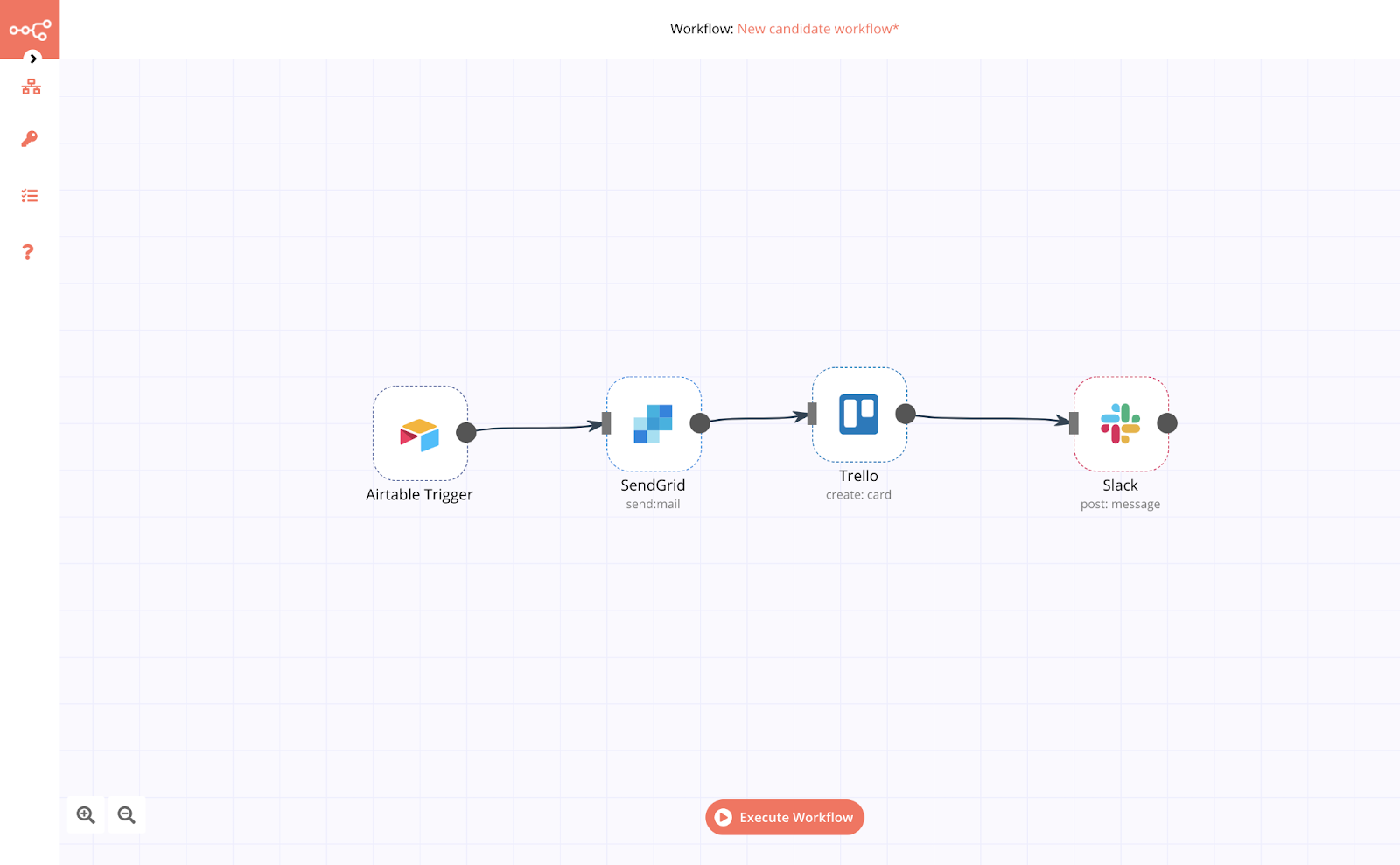No-code Automation: Zapier, Integromat and our Applicant Tracking System
Some time ago people had to work magic with punched cards to create an "application". Now we have to use code, but some enthusiasts are already just dragging and dropping elements and creating an application.

Could we all be like those clever folks? Let's get to the bottom of this!
The problem
For the Paralect Startup Summer Program we needed to create an applicant tracking system. Nothing fancy — just gathering data from applicants, transferring it to our team and staying in touch with the applicant via email.
As you could have guessed we know a thing or two about no-code. We had a no-code applicant tracking system for the previous batch of Startup Summer, but it had certain downfalls that we wanted to fix.
For the previous Paralect Startup Summer we had an automated flow that looked like this:
- An applicant submits the Webflow form
- Trello card with the applicant's data is created
- Upon the creation of that card a new message is sent into a Slack group
- The applicant is updated on the process via SendGrid
This year we've made some changes with the first step — Webflow's form. Unfortunately, there were cases when the applicant's data wasn't transferred to Trello.
So we decided to try Tally and added an additional step for data storage with AirTable. Tally can be integrated with AirTable even without Zapier so it was easy to connect the two.
And here’s this year's flow:
- An applicant submits the Tally form
- AirTable record with the applicant's data is created
- Trello card with the applicant's data is created
- Upon the creation of the card a new message is sent into our Slack group
- The applicant is updated on the process via SendGrid
Why Trello and SendGrid?
For no particular reason. We just like both of the services. SendGrid is easy to integrate and has a free basic plan that fits our needs and Trello is Trello :)
Automating the process
With the flow figured out all we had left is to assemble our Frankenstein, and we chose 4 automation tools to test how to do that:
You might say that there is a tool X that could do the same, and you are most likely correct! There are many other alternatives such as Automate.io, Parabola, IFTTT, Clay, Workato, Alloy, Phantom Buster and others.
We chose these four because they’re popular with no-coders and not identical to each other.
Comparison parameters
To keep this test objective, we'll assess the performance of the tools according to three main parameters:
- Cost
- Simplicity
- Flexibility
So let's set them up and see which works best for our automated applicant tracking system.
Zapier
Service description
Zapier is one of the most popular automation tools on the market with more than 100k customers and 3 million users. Zapier launched in 2011 and has been automating the world ever since.
Let's take a look at the building blocks of a pipeline in Zapier.
Each pipeline is called a Zap. A Zap itself includes a trigger and a set of actions that execute on the trigger's action. Essentially there is a set of events that trigger a set of actions.
For example a new email would be a trigger and creating a new AirTable record with the email's content would be an action. It sounds very simple and it is.
Solution
The intuitive interface and ease of connection made it easy to automate our flow with Zapier. It took me about 10-15 minutes to create the pipeline from the ground up.

Evaluation
- Cost: The ease of use and quick setup does come at a cost though as Zapier's fees can add up quickly — the basic plan starts at $0 and the Company Plan starts at $599. Only Zaps with one action and a mandatory 15 minutes interval between launches are available on the free version.
- Simplicity: The service is quite intuitive — you just open a drop-down menu and choose from available options. You might need a minute or two to figure everything out, but nothing major.
- Flexibility: You sure can get fancy with Zapier as it has branching support, custom webhooks, but everything in this world comes with a price, and Zapier isn't an exception.
The bottom line — Zapier has been proven by thousands of no-code creators to automate all kinds of solutions. If you’ve got the budget to match the Zaps you need, you can’t go wrong with it.
Integromat
Service description
With more than 20 thousand sign-ups per month, Integromat attracted attention with its intuitive interface and lack of restrictions, which are present in the free version of Zapier.
The pipeline in Integromat consists of modules. The automation flow is represented by a graph, which, in my subjective opinion, is more convenient than in Zapier.
Solution
Integromat turned out to be just as straightforward as Zapier in recreating the initial flow:

Evaluation
- Cost: The solution is more affordable than Zapier - for the same amount of money, you can buy a shorter timeout and more features.
- Simplicity: Very user-friendly and intuitive interface.
- Flexibility: The free plan seems more flexible — any number of elements (modules), branches, and broadcasts are available in the free version of Integromat.
Need to test a new idea on a low budget? Then Integromat is an ideal choice.
n8n.io
Service description
An interesting and promising automation service that has raised more than $12 million in their April Series A round. The tool is completely free and open source. Users can run n8n locally or deploy it. It is also possible to connect to n8n.cloud for a fee.
Solution
Some difficulties arose in replicating the proposed flow, as n8n turned out to be less user-friendly from a technical point of view. It was originally planned to deploy n8n to DigitalOcean Apps. However, the EventSource used by n8n is not supported in DigitalOcean Apps.
I had to deploy the service the old fashioned way. As a result, a droplet was created at Digital Ocean and a CDN record at Cloudflare.

Voila! The flow is set up, but it works incorrectly. Form submissions were received more than one time and sometimes filled with incorrect data.
Evaluation
- Cost: The service is free. However, be prepared to pay cloud providers for deployment.
- Simplicity: Problems with deployment may arise. Connecting to services is more complex than Integromat and Zapier.
- Flexibility: Any number of elements are available. In addition you can redefine its logic at any time because the service is open source.
If you love open source solutions and are comfortable with the technical complexity, n8n.io could be perfect for you. But the free price and flexibility come at the cost of your time.
Autocode
Service description
Autocode, an organization strategically financed by Stripe, is presented as an IDE with automatic code generation and simplified integration with third-party services.
Solution (failed)
Automating our flow with Autocode turned out to be painful in comparison to three other tools. The generated code was sometimes created with errors, and saving changes wasn't happening in a timely manner.
As a result, it feels like it's easier to write the code yourself than to use the tool.
Also it is worth mentioning that in the free version only 2 third-party services can be connected. Our flow required 4 — Slack, SendGrid, Trello, and Airtable.
Therefore the tool has been abandoned.
Evaluation
- Cost: Autocode has a very strange pricing policy for the number of services it connects to. There are two of them in the free version. This limitation greatly reduces the capabilities of the service
- Simplicity: The service was the most difficult to understand.
- Flexibility: Due to the fact that you have to write code, Autocode has a lot of flexibility. However, helper tools like code auto-generation seem to be more annoying than helpful.
After this failed attempt, we can’t recommend Autocode as a viable solution in this case.
Conclusions
We have a fairly simple task — to automate the application submission process by connecting the already existing applications. Coding the application would have taken some time, but using an automation tool seemed like a good idea and a convenient way to save time and money.
☝ We can safely say that Zapier and Integromat came out on top in this test. These services can be used by people who are unfamiliar with programming. This low threshold of entry lets you get started quickly and set up a consistent and reliable automation flow.
The n8n.io service, being a relatively new product, has been somewhat unsatisfactory for our task. N8n surely has potential for further growth and it’s fair to say that the way of using it seemed to be the most interesting, at least for me. But, since the setup is more complex and our results were inconsistent, n8n wouldn’t be our go-to — especially for less technical users.
I would not recommend using Autocode. The target audience of this product is not completely clear to me. As for automatization, the user must have good technical skills. But at the same time, the restrictions on the free version don’t allow even adept developers to build complex or extensive flows.
There are already no-code tools that allow you to solve problems in live products. However, additional charges are required for more flexibility and lower latency. Therefore, the choice between a developer and a no-code tool is not as obvious.
As a final note I would recommend approaching the topic carefully, starting with an estimation of the task's complexity and choosing the appropriate tools from there. No-code might sound great and it is, but every tool has its place and no-code is no exception.




